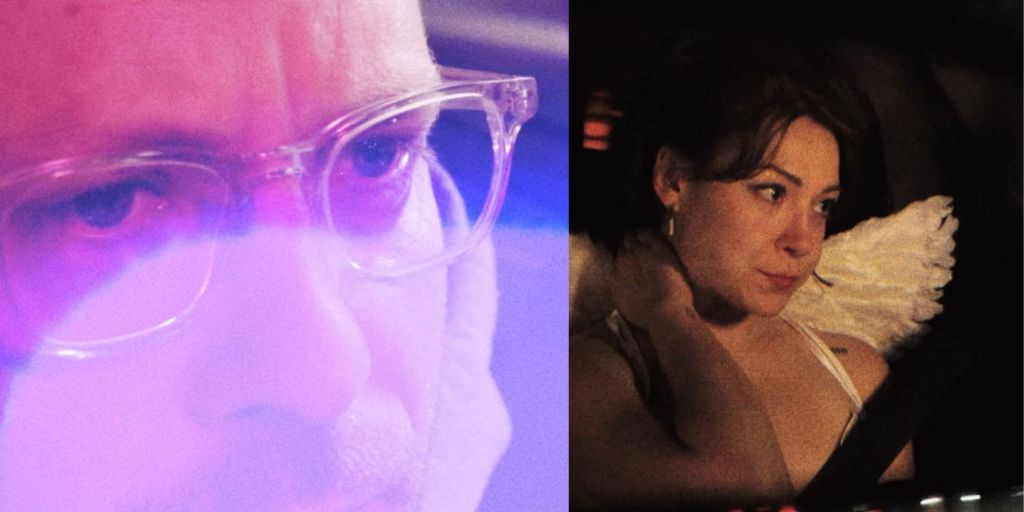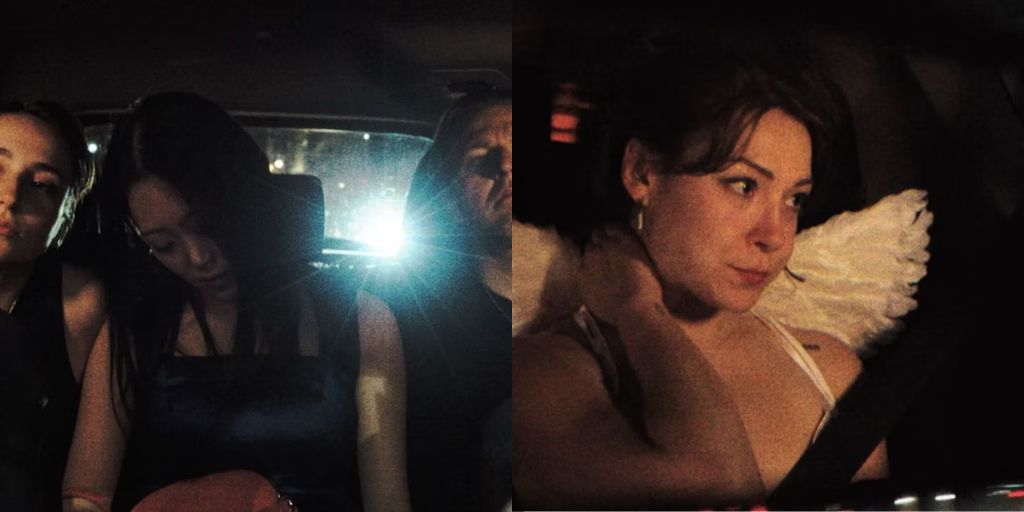People are often surprised when I say I don’t have a car in LA. It’s quite unusual because the public transportation system isn’t great and walking isn’t practical. However, I live close to many grocery stores and restaurants. When I need to go somewhere beyond walking distance, I can easily call an Uber or Lyft.
I have relied on these rideshare apps for several years and have met many interesting drivers and passengers. However, from the stories I’ve heard from drivers about other people they’ve picked up and the misuse of the app, I know my experiences are not as extreme as what drivers go through. The film “Self Driver” takes this idea to the extreme.
What Is ‘Self Driver’ About?
“Self Driver” is about a driver known only as D (played by Nathanael Chadwick) who is struggling significantly. He works very long hours for the rideshare app VRMR, which is clear from the fast food wrappers in his car and the calls from his partner (Sasha Gaponovitch) who says she and their child miss him.
Despite his hard work, D still faces financial problems, dodges calls from his landlord, and worries about whether his car will start each time he turns the key.
D deals with many difficult customers who sing, insult his driving, and complain about his car’s cleanliness and amenities. He starts to see hope when a mysterious customer named Nic (played by Adam Goldhammer) tells him about a new startup competitor called Tonomo.

Tonomo promises big bonuses and thousands of dollars a night if D follows all the rules: listen to the app at all times, never speak to customers, and accept every job. After thinking it over, D, desperate for a solution, agrees to join and soon finds himself in a nightmare.
“Self Driver” centers around a creepy app, similar to the ones in “Countdown,” “Nerve,” or many “Black Mirror” episodes. The app seems real and similar to the technology we have today. It has a calm female voice like Alexa or Siri giving D directions, but there is no map.
Every time D makes a mistake, the voice announces a large money deduction, and if D takes too long to do something, she starts a countdown from 10, raising the tension.
The true horror of “Self Driver” is not just the app but the situation that makes D rely on it. The film highlights the issues of the gig economy and capitalism. The frightening things D experiences are not supernatural but the worst aspects of human behavior, including violence and trafficking.
The film relies heavily on Chadwick’s performance. He does a great job balancing comedy with deep emotion. He reacts to strange situations with a solid, steady demeanor but also makes the audience feel for him.
Underneath the sci-fi story, there is a tired, mistreated man who has been beaten down by customers and society. It is painful to see him lose his morals as he just tries to earn enough money to feed his family.
“Self Driver” is a low-budget film with a creative style that draws you into director Michael Pierro’s vision and D’s experience. The camera work and editing, especially when D is on drugs, are simple yet effective and distinct. The score by Antonio Naranjo adds to the film’s dark atmosphere and is very memorable, similar to the music in “Squid Game.”
While “Self Driver” achieves a lot with its limited budget and space, it has some issues. The film is just under 90 minutes, but it could be tighter with 15 minutes trimmed off. The repetitive montages of annoying passengers show D’s monotonous job but become tiresome after a while.
The app is unique, but the rest of the movie feels more generic, especially in the third act. The dramatic drug scenes, mysterious bags, and guns seem cluttered and clichéd compared to the quieter, ethical dilemmas D faces.
“Self Driver” is an impressive film considering the challenges faced by Pierro and his team. It is not perfect but offers a humorous and deep message that stands out from similar films. I’m excited to see what future projects Pierro and Chadwick will work on next.





